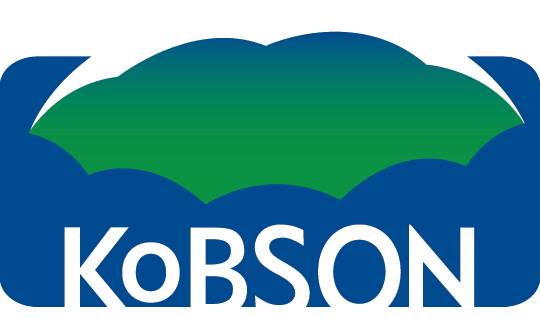The paper presents a theoretical study approach to the Nusselt number and friction factor characteristics in strip fin surfaces. Extensive analyses were conducted on the thermal and hydraulic performances of off-set strip fin surfaces using the experimental data provided by Kays & London [1] and Shah and London [2,3]. General relationships were developed to predict the hydraulic and thermal performances giving accurate predictions across all flow regimes for a wide range of common strip geometries. The pressure drop encountered during flow through channels having off-set strip fins is affected by both flow disruption and flow blockage. Flow disruption appears to be the dominant factor in the laminar flow region. Under turbulent flow conditions, both effects were considered. Laminar flow heat transfer is well predicted if the Graetz Number is based on four-time strip fin length. Turbulent flow heat transfer is found to be proportional to the square root of the friction factor.
The paper is dedicated to my late partner Professor Graham T. Polley. He graduated as a chemical engineer from the Loughborough University of Technology in 1969. As a PhD holder, he worked at the UK National Engineering Laboratory (NEL). In 1978, he was appointed UK representative on the International Energy Agency Executive Committee and joined UMIST as project director for the Centre for Process Integration in 1985. He retired from UMIST in 1996. In 1990, he was awarded the Moulton Medal by the IChemE for his work on oil refinery retrofit. Also, a past president of the UK Heat Transfer Society. He kept working as a visiting Professor in the Department of Chemical Engineering at the University of Guanajuato, Leon, Guanajuato, Mexico. He was involved in wide research works such as boiling and condensation heat transfer, two-phase flow, heat exchanger design and fouling, and heat recovery networks.
1. Kays, W. M., & London, A. L.
(1984). Compact heat exchangers.
McGraw-Hill Inc. 3rd Ed.
2. Shah, R. K., & London, A. L.
(1974). Thermal boundary conditions and some solutions for laminar duct flow
forced convection.
J. Heat Transfer. May 1974, 96(2): 159-165. DOI: 10.1115/1.3450158.
3. Shah, R. K., & London, A. L.
(2014). Laminar flow forced convection in ducts: a source book for compact heat
exchanger analytical data. Academic press.
DOI: 10.1016/j.applthermaleng.2018.04.101.
4. Zheng, X., Qi, Z. (2018). A
comprehensive review of offset strip fin and its applications. Applied Thermal
Engineering, 139, 61-75.
DOI: 10.1016/j.applthermaleng.2018.04.101.
5. Basavarajappa, S., Manavendra, G., Prakash, S.
B. (2020). A review on performance study of finned tube heat exchanger. In
Journal of Physics: Conference Series, 1473(1), p. 012030). IOP Publishing. DOI 10.1088/1742-6596/1473/1/012030.
6. Mohammed Hussein, H. A., Zulkifli,
R., Mahmood, W., Ajeel, R. K. (2022). Structure parameters and designs and
their impact on performance of different heat exchangers: A review. Renewable
and Sustainable Energy Reviews, 154, 111842.
DOI: 10.1016/j.rser.2021.111842.
7. Vyas, A. L. O. K., Agrawal, A. B.
(2013). Offset-strip fin heat exchangers a conceptual review study. Int. J.
Eng. Res. Appl. (IJERA), 3, 1306-1312.
ISSN: 2248-9622.
8. Bhuiyan, A. A., Islam, A. S. (2016).
Thermal and hydraulic performance of finned-tube heat exchangers under
different flow ranges: A review on modeling and experiment. International
Journal of Heat and Mass Transfer, 101: 38-59. DOI:
10.1016/j.ijheatmasstransfer.2016.05.022
9. Marțian, V., Albețel, S., David, E.,
& Nagi, M. (2017). Heat transfer and hydraulic performance models for a
family of aluminum plate heat exchanger with transversal offset strip fins.
Experimental Heat Transfer, 30(6), 530-543.
DOI: 10.1080/08916152.2017.1315467.
10. Polley, G. T., Abu-Khader, M. M.
(2005). Interpreting and Applying Experimental Data for Plate-Fin Surfaces:
Problems with Power Law Correlation. Heat Transfer Engineering, 26(9), 15–21.
DOI: 10.1080/01457630500205588.
11. García-Castillo, J. L., Picón-Núñez,
M., Abu-Khader, M. M. (2022). Improving the prediction of the thermohydraulic
performance of secondary surfaces and its application in heat recovery
processes. Energy, 261, 125196.
DOI: 10.1016/j.energy.2022.125196.
12. Prasad, B. S. V. (1996). The sizing
and passage arrangement of multistream plate-fin heat exchangers. Heat Transfer
Engineering, 17(3), 35-43.
DOI:
10.1080/01457639608939879.
13. Churchill W.S. (1977). Comprehensive
correlating equations for heat, mass and momentum transfer in fully developed
flow in smooth tubes”, Ind.Eng.Chem.Fundam,16(1):109-116. DOI: 10.1021/i160061a021.
14. ESDU data Item 93018. (1993). Forced
convection heat transfer in straight tubes Part 2: laminar and transitional
flow, ESDU International plc, Corsham St., London.
15. Martin H.
Vorlesung Warmeubertragung II, Thesis, Univ. Karlsruhe, 1990.








